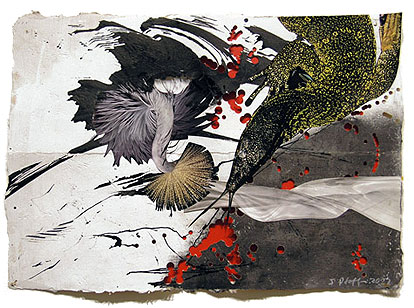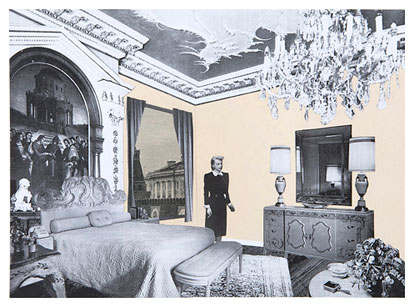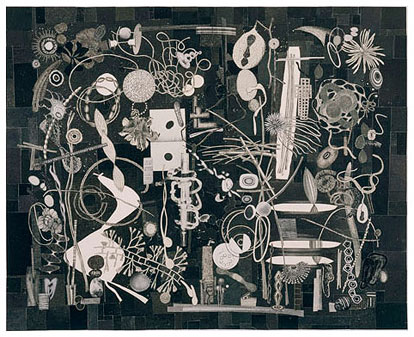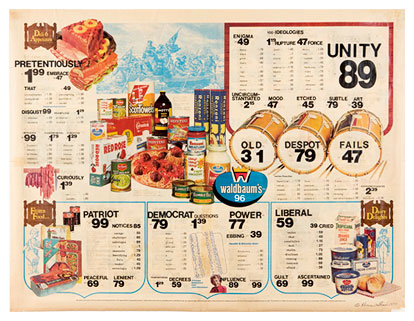Daughters of the Revolution: Women & Collage
Pavel Zoubok Gallery / New York, NY
July 2, 2009 - August 14, 2009
Daughters of the Revolution: Women & Collage at New York’s collage-centric Pavel Zoubok Gallery, celebrates the contributions that women have made to collage. The exhibition brings together the works of thirty-four prominent female collage artists. ranging from Hanna Höch’s swirling Traumfart (1947) to 2009 works by Marietta Ganapin, Holli Schorno, Ann Shostrom, and Maritta Tapanainen. Also included are works by Alice Attie, India Evans, Addie Herder, Louise Nevelson, Anne Ryan, Miriam Schapiro, Karen Shaw, Hannah Wilke, and others.
Less than half of the works in this “all-woman” exhibition focus on concerns which might be described as women-related but the works in the show stand on their own regardless of their focus. Examining the small to medium sized collages from a close distance allows the viewer to consider them individually without being distracted by the adjacent works.
Among the works which focus on gender-related concerns are May Wilson’s Ridiculous Portrait (Queen Elizabeth II), which examines the absurdity of how women are perceived in a society which is still all too male dominated and Hannah Wilke’s Kobenhaven, 1975 in which twenty-four quasi-vaginal forms made from kneaded erasers are affixed to a postcard of Copenhagen. Alice Attie’s work Requiem I effectively uses both repetition of images and stark negative space create a powerful and timeless statement about being a woman. Works by Miriam Schapiro, Martha Rosler, and Elaine Lustig Cohen also fall into this category.
By subtly altering text and images Karen Shaw has transformed a Supermarket flyer into a socio-political manifesto. To the extent that women go to the supermarket more often than men, Shaw’s 1977 work Summantics Flyer: Unity 89, might belong with those in the previous paragraph. But because the manifesto itself transcends gender it is well placed between those discussed above and those discussed below.
Among those artists whose works are not specifically gender-related, are Anne Ryan, Maritta Tapanainen, and Judy Pfaff. Ms. Ryan is represented by a typical work, an oval image made up of informal torn and cut quadrilateral shapes on a textured background while Ms. Tapanainen’s works, linguistically sourced in the early surrealist works of Miro and Picabia, articulate a more complex contemporary world view than those of her predecessors. Two of Judy Pfaff’s collages effectively use holes punched in the primary layered paper surface to reveal a secondary colored sheet behind it. The holes are sometimes singular and sometimes the result of multiple punchings and, because the two layers have some space between them, the edges of the holes cast dynamic shadows on the colored sheet.
Daughters of the Revolution is accompanied by an oversized 24-page illustrated catalog which also includes an exploration of ideas first articulated in the 1978 essay “Femmage” by Melissa Meyer and Miriam Schapiro. The current popularity of collage among women artists is evidence of the prophetic nature of those ideas. In that context, Daughters of the Revolution not only examines the evolution of collage, it also honors the many women artists around the world for whom collage is the medium of choice.
-- JT, August 2009
Revised November 2011
Pavel Zoubok Gallery’s excellent website includes many additional images from Daughters of the Revolution: Women & Collage. You can see them here. To see other exhibitions at, and the works of collage artists currently shown by, this collage-focused gallery visit www.pavelzoubok.com |




